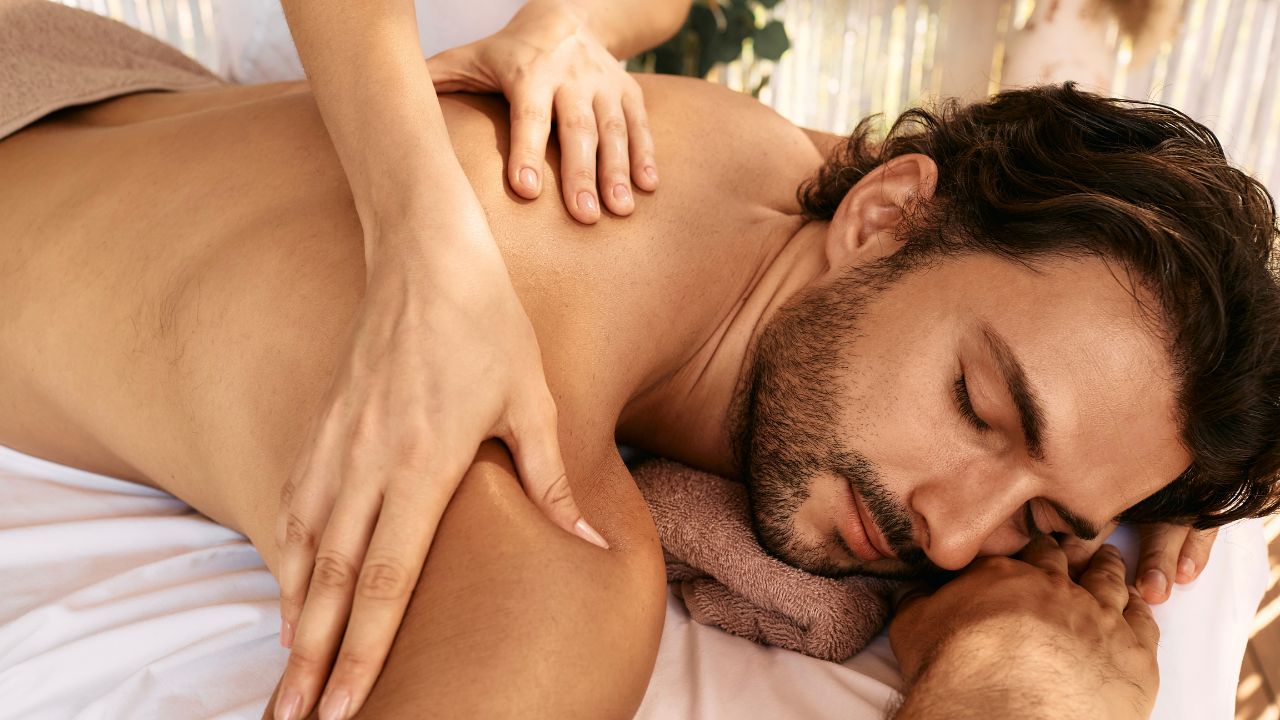.jpg)
Massage applies gentle pressure to muscle tissue.
This pressure does several things:
• Boosts blood flow and warms tissue
• Reduces muscle tightness and stiffness
• Calms over‑active nerves
• Triggers relaxation via the parasympathetic system
• Lowers stress hormones like cortisol
• Boosts mood and clears mental fog
A review from Auckland University tested massage on athletes and confirmed increased blood flow, lower muscle tension and more muscle compliance (more flexibility and less stiffness.
Physiological effects include calmer nervous systems and lower cortisol levels.
Muscles aren’t just for moving your body. They store stress and tension.
If you sit at a desk all day or carry mental weight, your muscles tense up.
These knots or contractures limit movement, cause pain and blink your body into low gear.
They can fog your thinking and keep your energy stuck.
Massage targets these tight spots, releasing tension and improving how muscles move.
Improved circulation
Better blood flow means faster recovery, less soreness and more efficient muscles.
Reduced stiffness
Massage increases flexibility and eases joint range of motion, helping you move freely.
Faster recovery
Massage helps clear metabolic waste like lactic acid. A Mayo Clinic review confirms less soreness and faster workout recovery.
Injury prevention
A 2017 sports-remedies review explains how massage reduces muscle pressure and tissue adhesions, lowering injury risk.
Less pain, more comfort
Multiple trials show massage relieves chronic pain, even matching anti-inflammatory drugs in effectiveness
Stress tightens your body and clouds your mind. The American Massage Therapy Association reports massage lowers heart rate, blood pressure and cortisol levels. It also improves mood and reduces anxiety.
A Mayo Clinic study confirms massage reduces stress and neural tension, improving sleep and mental focus.

Frequency:
Weekly or bi-weekly sessions offer steady benefits.
Types:
• Swedish or relaxation massage eases overall tension
• Deep tissue or trigger point massage targets tight knots
• Myofascial release works the connective tissue
• Foam rolling self-massage can be used daily
Combine professional therapy with self-care. Even 10 minutes of self-massage can ease tension and uplift mood
Massage shouldn’t replace exercise or recovery habits. It enhances them.
Muscle tissue that can move fully and relax easily responds better to training.
Your body recovers faster. You reduce injury risk.
You feel clearer and more capable.
Muscle tension shows up in your body and in your mind. Massage gives you freedom to move and a calmer, sharper brain.
It is scientifically proven to improve circulation, reduce tension and release stress.
It helps muscles recover and keeps your system operating smoothly.
Massage is not luxury. It’s a strategic tool for health, performance and clarity.


